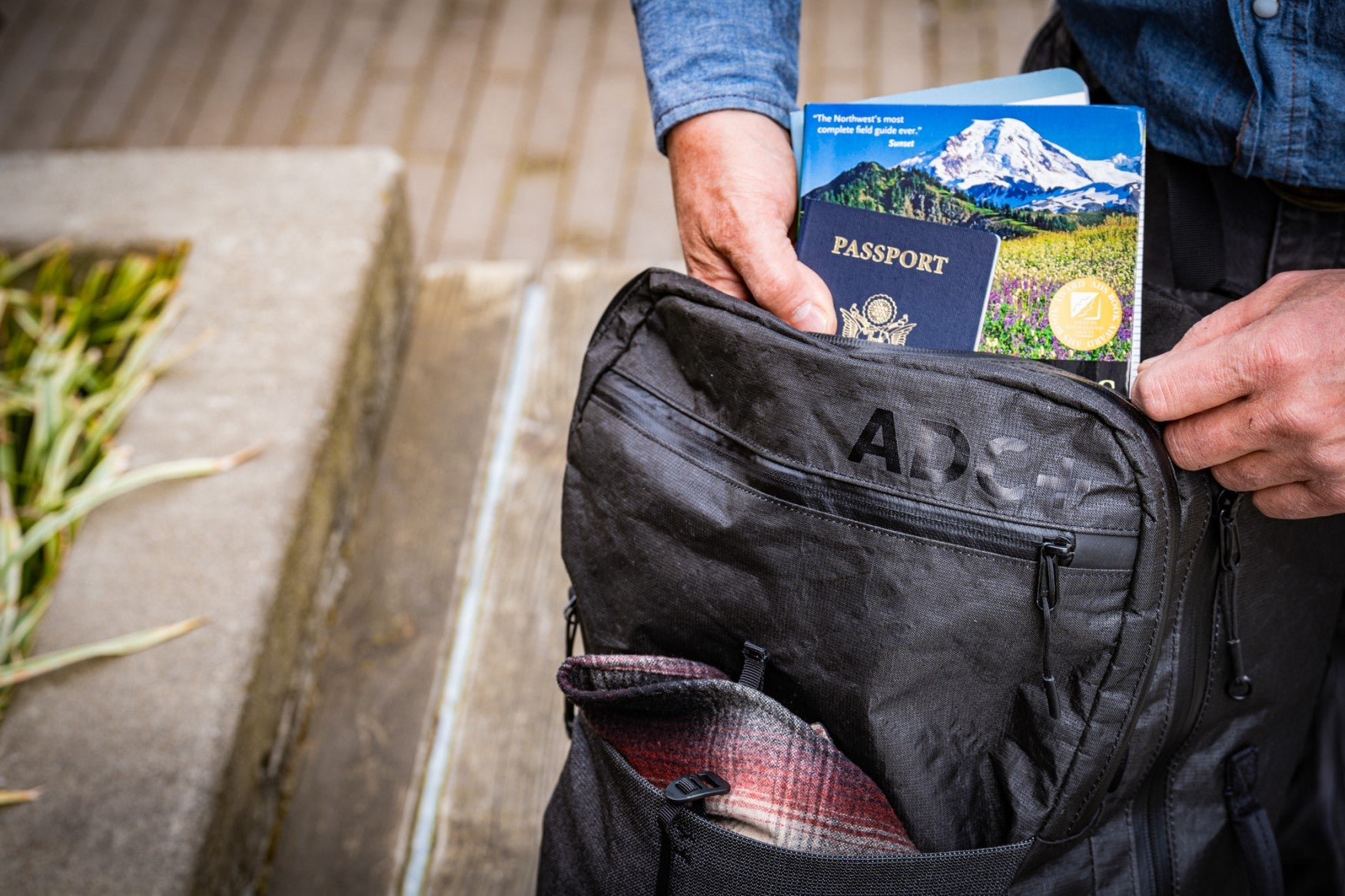Pack-rafting has been a great new adventure that has helped me explore the wilderness in a new way. By combining my love of backpacking, and my boyfriend’s love of kayaking, we’ve found the perfect combination to satisfy both of our preferred modes of travel.
We’ve been using Alpacka’s Llama packrafts, which weigh about 8-9 pounds after we installed thigh-straps, a few more tie-down points, and the cargo-fly, which allows you to pack all of your gear INSIDE the boat instead of on the bow of the boat. The pack-raft itself has a whitewater spray skirt to keep water out of the boat, and because we do tend to take the boats on rivers up to Class IV, we carry helmets, life jackets, throw-bags, patch kits, paddles, and dry bags. All those items can add up even though the rest of our gear is a light-weight backpacking set-up
In order to fit all that boating and hiking/camping gear into a pack for the “packing” portion of any trip, we have tried a variety of different backpacks, sometimes strapping most of our gear to the outside, or turning our backpack into the “leaning tower of Pisa” to fit everything in. The load can be quite heavy, and most of our configurations have been quite uncomfortable.
 At first glance I knew the Flex Pack would be a big improvement over the various different packs we’ve tried over the past 4 years. Because I used the Fusion 50 on the Continental Divide Trail last year, I knew the suspension system that Ron and Brian designed can handle heavy loads with ease, and I knew the weight would be much better distributed in the Flex Pack.
At first glance I knew the Flex Pack would be a big improvement over the various different packs we’ve tried over the past 4 years. Because I used the Fusion 50 on the Continental Divide Trail last year, I knew the suspension system that Ron and Brian designed can handle heavy loads with ease, and I knew the weight would be much better distributed in the Flex Pack.
The next selling point? Because the Flex Pack is primarily a frame with straps, we had much more flexibility in how we strapped everything to the pack. Both Kirk and I have played with different packing techniques on our recent trips, and I’ve tended to carry my boat rolled up and stored horizontally in the bottom of the pack, with the dry bag and other items stored on top. Kirk likes a clean pack without much hanging out or over, and prefers to store his boat inside the 50 liter dry bag that’s provided. Paddles tuck into the front flap easily, and the adjustable straps, and extra straps that come with the bag ensures you have countless ways of lashing, and you can extend the width of the pack to accommodate even bulkier loads.
 Of course the waist belt comes with roomy zipper pockets for a camera or snacks, and the back panel’s bungee cord and zipper pouch still provides you a way to carry smaller items on the outside for easy access.
Of course the waist belt comes with roomy zipper pockets for a camera or snacks, and the back panel’s bungee cord and zipper pouch still provides you a way to carry smaller items on the outside for easy access.
Even though we store our gear inside the boat now thanks to the cargo fly, other boaters can simply lash the dry bag to the bow of the boat with the lash points on the bag, and the release valve allows you to bleed the air out before you set out.
The Flex Pack is bomber, it is so sturdy and well-built that we’ll be able to use this pack for river adventures far into the future. I know we haven’t exhausted the possible configurations of this pack, and we look forward to finding even more ways to use this system in the backcountry.
If you want to read about some of our pack-rafting adventures around Oregon and beyond, check out our blog at www.adventureswithpackraft.blogspot.com.











Leave a comment
This site is protected by hCaptcha and the hCaptcha Privacy Policy and Terms of Service apply.